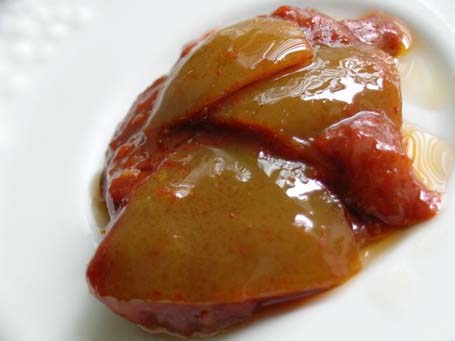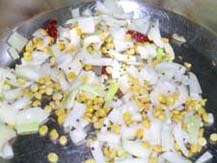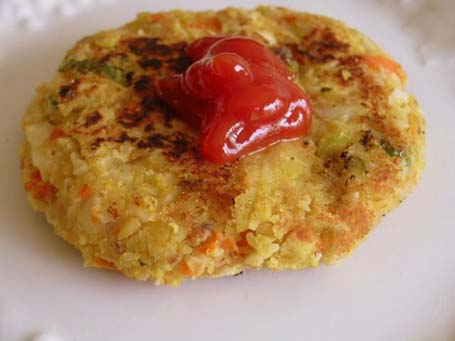We had a three day holiday for Memorial Day, and this is how we spent the weekend:
Saturday- shopping, cleaning the house, preparing dinner with my husband Vijay’s help. Our Nandyala family friend and his college friends came all the way from Milwaukee. They made a pit stop at our house before reaching their final destination – SV temple, Pittsburgh.
For dinner, we prepared puri, rice, chana masala, chicken kurma, Boiled eggs sautéed in red chilli-garlic powder, peanut chutney, sambhar, papads, raita with yogurt, and for dessert banana-walnut cake and fruit (cantaloupe). It was so hectic; I couldn’t find time to take pictures of preparation and finished items.
Sunday- helped our friends who came here from India just one month back, move to Detroit. Packing, cleaning etc. Baked again another banana-walnut cake for them. Managed to take some pictures of cake.
Monday- We have planned to go to Pittsburgh for diva darshanam at the SV temple. But it was raining so hard, and I didn’t want to travel on the PA Turnpike, which is notorious for accidents. So instead we hit some local shops nearby, and dined out.
First long weekend of summer was over just like that.
As much as possible, I try to avoid using eggs in my baking for cakes etc. Because I don’t like the strong chemical smell of egg yolks. It wasn’t like that back in India, but after coming here, the yolk smell and taste has started to make me very ill. I don’t know what they feed the hens here in US, the fertilizer smell of egg yolks is unbearable, and the taste, oy…awful to say the least.
I found out that very ripe bananas are good substitute for eggs, so I use them often in my cake and bread making.
1 cup Bisquick pancake flour. All-purpose flour works fine too. (The only reason I made the cake with Bisquick is because I wanted to finish off the big packet of Bisquick pancake flour that I purchased at Costco last year.)
1/2 cup – walnuts, chopped
1 banana, skin peeled, and ripe fruit mashed smoothly
1/4 cup – sugar
4 tablespoons – oil or ghee
1 tsp each, – baking powder and vanilla extract
Milk if needed

You must be familiar with the baking drill. Wet first, dry next, and then combine the two together.
IN a big bowl, mix the wet ingredients – banana, oil and vanilla extract. Whisk to combine well.
Then add the flour, sugar, walnuts and baking powder. Combine thoroughly. If the batter looks tight, then add about quarter cup of water or milk.
Preheat the oven to 350 F.
Prepare the cake pan, by applying ghee or oil on the bottom and to the sides. Pour the cake batter. Spread evenly. Bake at 350° F for about 30 to 45 minutes. When a toothpick inserted into the baked cake, it should come out clean. Cool and then cut pieces. Enjoy.





































